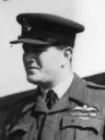Firefighters 1940-45
The 1st RAF Fire Fighters had a demanding task, fighting fires in Aircraft was a new concept and required different methods from conventional Fire Fighting. In a crashed Aircraft, Aircrew surrounded by Fire have only 3-min survival time and this requires rapid response & suppression of flames in order to create survivable conditions to affect a rescue. The early Fire Fighters found themselves poorly trained & under-equipped and they had to develop new skills with the equipment they had inherited which were not purpose-built but converted standard Fire Vehicles. Those pioneers overcame these obstacles and paved the way for today’s RAF Fire Fighters and from those times to the present their aims were:
- To Save Life
- To Minimise Damage to Aircraft and Associated Equipment
- To Make Safe any Special Risk
RAF Fire Fighters have served all over the world from Africa to the Middle East, India, Far East, Central America, Falklands, Canada & Europe and had to operate in hostile environments & conflict zones which always brings new challenges. Apart from Aircraft Crash Rescue RAF Fire Fighters are also trained in conventional fire fighting enabling them to react to fires in technical areas & married quarters and on numerous occasions have assisted the Civil Fire Service in local off-Base incidents.
In July 1940 the Fire Training moved from RAF Cranwell to RAF Weeton but only for 3 years and in August 1943 moved to RAF Sutton on Hull. This was where the Fire Service was to see immense changes in its structure & organisation. The Training Unit was to be known as the RAF School of Firefighting. The Air Ministry realised that there had to be significant changes made in the approach to Aircraft Fire Fighting. This was mainly due to Aircraft becoming larger with increased fuel loads which in turn required greater foam producing capacity from Vehicles. Also, the introduction of the Jet Aircraft brought on new challenges and this required improved Fire Fighting techniques and more intense & specialised Training of Personnel.
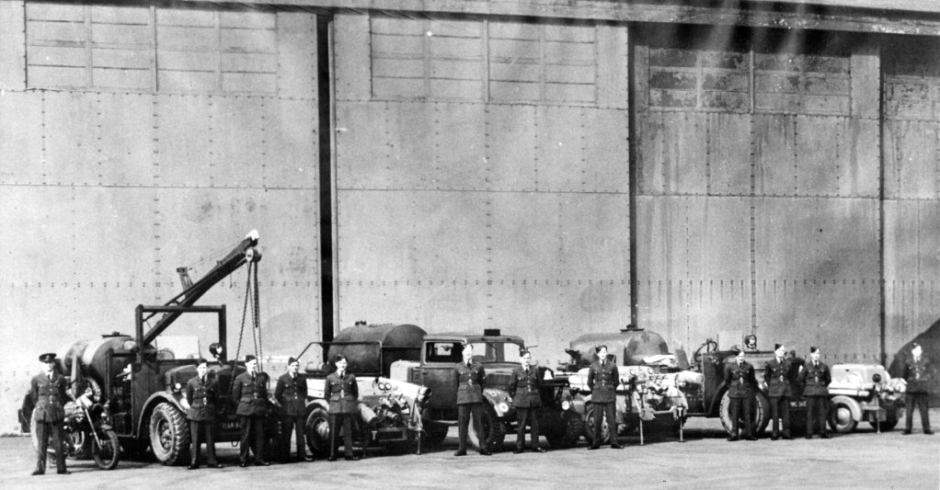 RAF Scampton 1940’s
RAF Scampton 1940’s
During the War Years, there was to be many acts of bravery by Fire Fighters and here is just one example of one Airman who was awarded the British Empire Medal for Bravery in 1942
Sergeant, John William EMMETT
In the early hours of a day in September 1941, this Airman saw an Aircraft having difficulty in landing at an Aerodrome. Anticipating a Crash, he took charge of the Fire Tender, although not Officially on Duty, and arrived at the scene of the accident within 3-mins. The Aircraft, which had been broken in 2 by the impact, was burning furiously and 2 members of the crew could be seen alive in the flames below the Fuselage. Sergeant Emmett, protected only by Asbestos Gloves, dashed into the burning wreckage and extricated one of the Crew. Before he could return for the 2nd man, the petrol tank split and the fierce heat of the blazing petrol then prevented any near approach. Sergeant Emmett tried repeatedly to extricate the other living member of the Crew by means of a Grab Hook but without success. In spite of a violent explosion, Sergeant Emmett continued to direct the work of his Fire Party until the fire was completely extinguished and the remaining bodies were recovered. Unfortunately, the rescued Airman has since died of his injuries. Sergeant Emmett on this occasion displayed great devotion to duty, courage & disregard for his own safety. He has been in charge of the Station Firefighting Personnel for the past 9 months and has shown considerable fortitude & presence of mind at many flying accidents on and near the Station.
By 1940 the RAF Fire Tender stock was mostly comprised of the Crossley FE1, the Streamlined & FWD Type with the introduction of the Ford Motor Company WOT1.
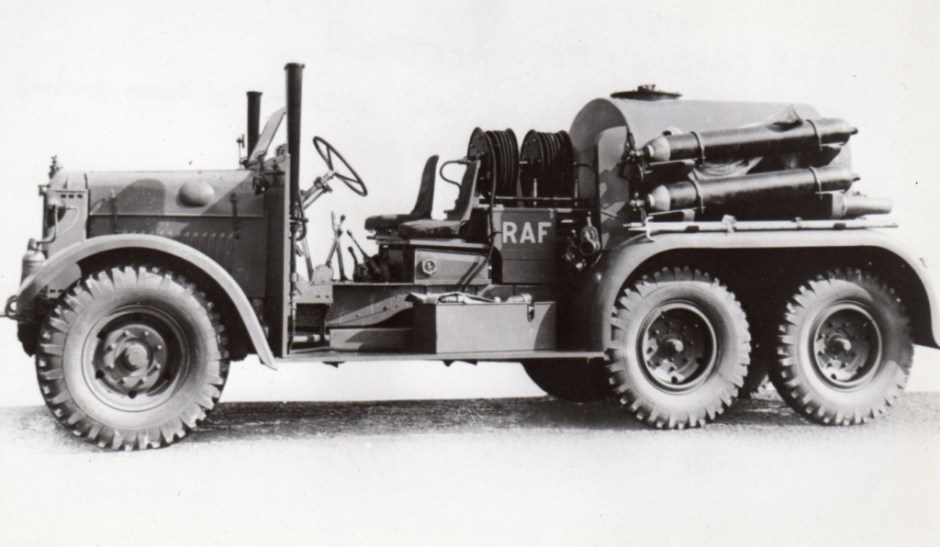
Crossley FE1 Crash Tender which carried 300 Gallons (1,350 Litres) of Water, (28 Litres) of Foam Compound and 4 60Ib CO2 cylinders
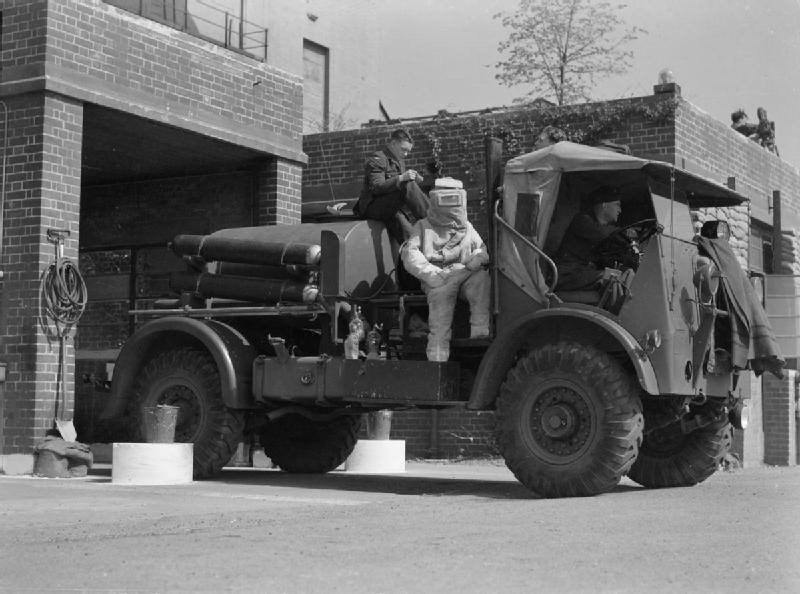
A Crossley FWD Type 4X4 Crash Tender which carried 300 Gallons (1,350 Litres) of Water, (28 Litres) of Foam Compound and 4 60Ib CO2 cylinders.
The Air Ministry were still concerned that the ability of the current Crash Tenders where not adequate to deal with Fires on the large multi-Engine Aircraft. They carried out Trials and these proved conclusively that this was the case. The Air Ministry set up a Panel to examine & report on the problems. December 1943 the Air Ministry Order promulgated the Trade of Firefighter a sub-specialisation of the Officers Support Branch, that of ‘Fire & Anti-Gas Officer’ was set up to Command the new Trade. The School was renamed as the RAF School of Firefighting & Anti-Gas. During the period a 2nd School was opened at Ismalia in Egypt but was closed at the end of WW2. At the end of WW2, the Air Traffic Control Officers Branch assumed the responsibility of the RAF Fire Service. In the post-War years, some 5,000 Regulars & National Service Conscripts were trained at RAF Sutton on Hull

A preserved WOT1 (War Office Truck 1) at the Museum of RAF Firefighting. The later type was modified to carry 400 gallons of water and 65 gallons of foam to increase foam production. Although the WOT1 & Crossley’s were in production there was still a shortage of Fire Equipment in the mid-War years. It was when the Fire School moved to RAF Weeton that the ‘Weeton Type’ was developed, which was designated WOT1A. It was on a strengthened Chassis with and enclosed Cab but the water/compound mixture was fed into the suction side of a standard Coventry Climax light portable pump mounted across the Chassis. This increased the quantity of foam produced and a longer jet throw.

The ‘Weeton Type’
In 1944 the panel concluded that that vehicles capable of producing not less than 2,400 gals per min (10,800 litres) for a period of 10-mins (with additional water supplies) should be made available. Also, this should be supported by 1,500Ibs of Carbon Dioxide, but at the time no Chassis could carry the quantity of media required. So the recommendations of the Panel were met by producing Foam Tenders backed up by Water Tenders & CO2 Tenders. The 1st of these new Crash Tenders was the “1944 Conversion Type”, so-called because it was a Conversion of the 1942 WOT1. Some 350 ‘Weeton Type’ Crash Tenders were put into Service following their introduction in 1944.
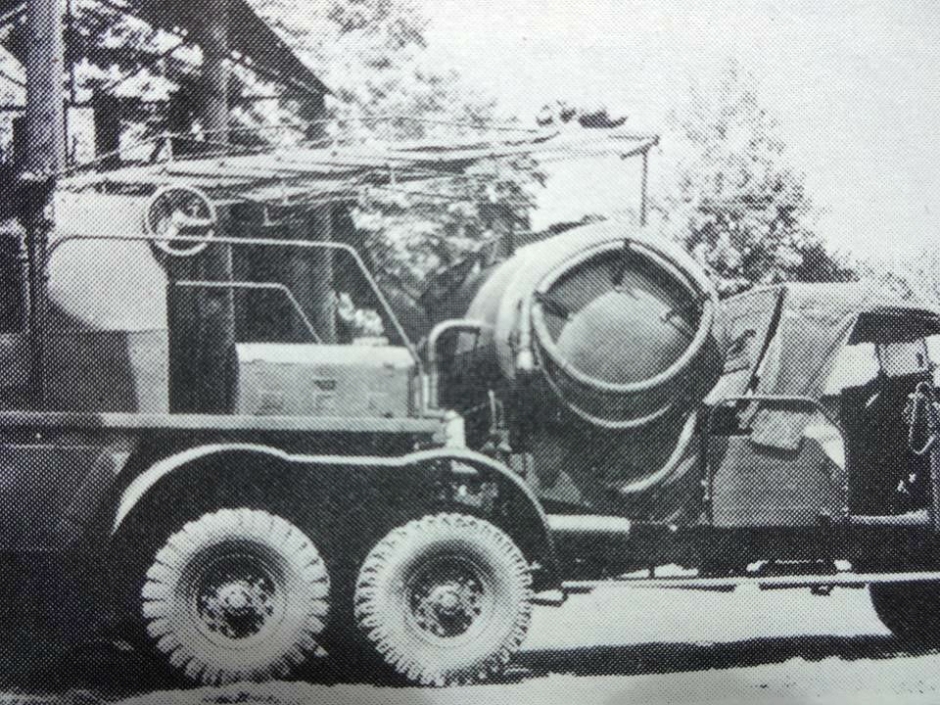
1944 Conversion Type
This carried 300-gals (1,350 litres) of Water & 100-gals (450 litres) of Foam. The main innovation was the provision of 3 Monitors, 2 on the rear Deck and one on the collapsible Tower. Two 2½-ins hand-lines could also be used at Ground Level if required. The Foam was mixed by a Pump which was independent of the Road Engine.
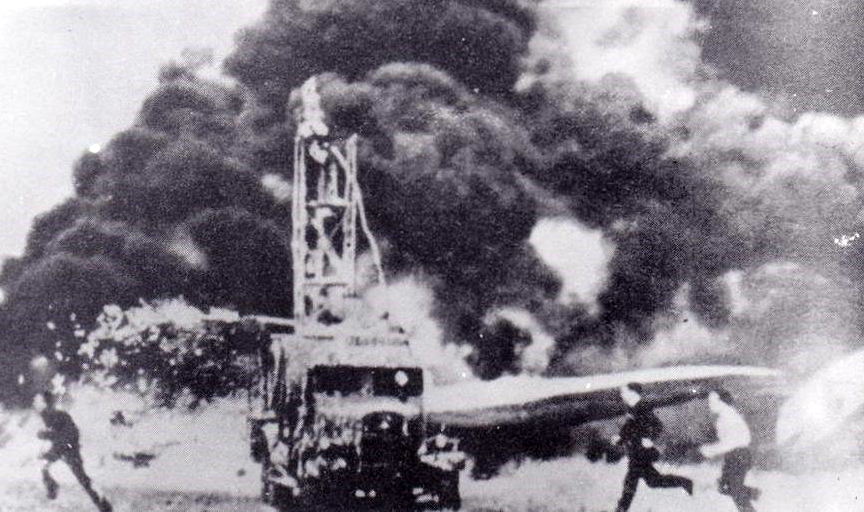
1944 Conversion Type in action showing the platform extended
The next Crash Tender was the 1944 Monitor Type which was on an extended Ford WOT1 A1 Chassis which allowed a longer Crew Cab to be fitted to give protection to all Personnel. The Tower was dispensed with & Firefighting was performed by a rear-mounted Monitor or 4-hand lines, this was supplemented by 4-60Ib CO2.
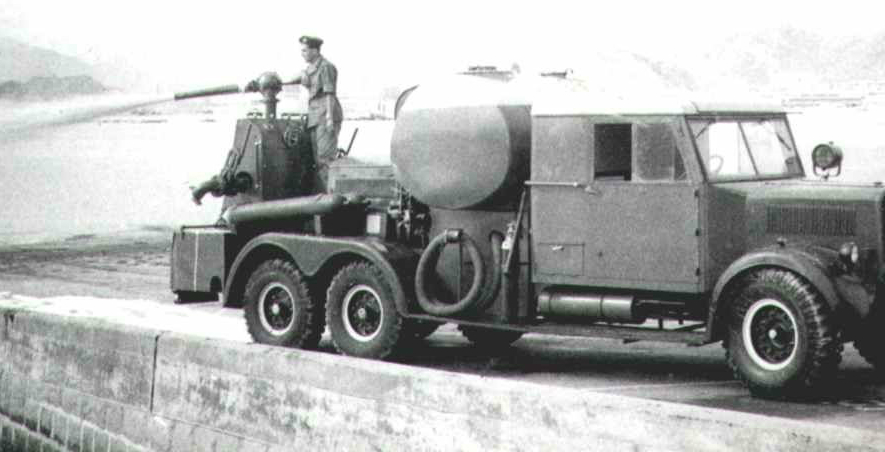
1945 Monitor Type
To carry on with the recommendations of the Air Ministry Panel that the Foam Attack should be supported by a CO2 Attack the CO2 Tender was produced and was commonly known as the “Gas Truck” It was based on an Austin K6 6×4 chassis. The CO2 (24 x 60Ib cylinders) were installed in 4-Banks of 6 cylinders each and housed longitudinally on the Vehicle Chassis, 2-Banks either side, with a Catwalk in the centre.
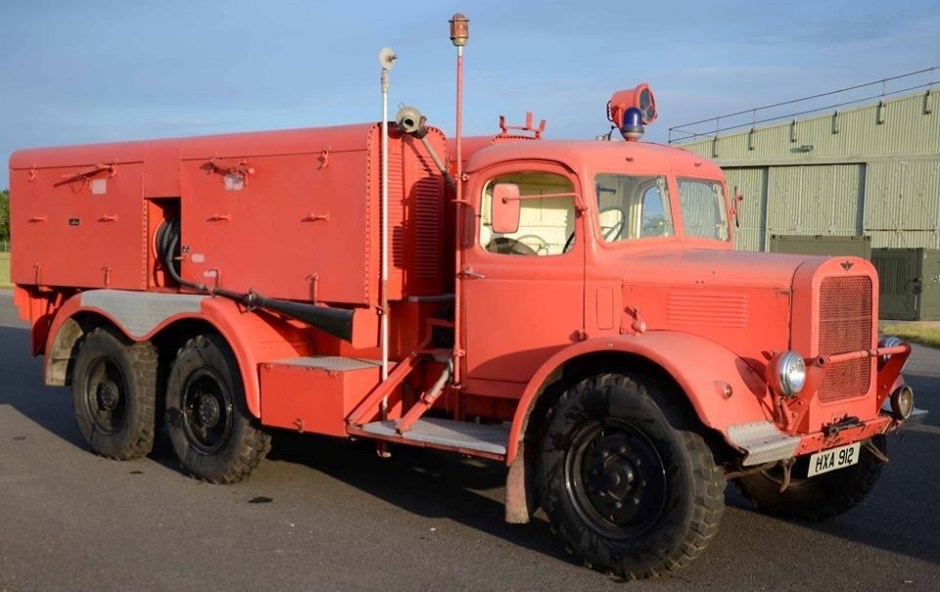
Preserved Austin K6 CO2 Tender at the Museum of RAF Fire Fighting
The new acquired Tenders, the 1944 Conversion, the 1944 Monitor & Gas Truck did not come into Service until after the War had ended. The additional water supplies required were carried on converted water carriers based on Bedford OY or Dodge, Canadian Ford & the Chevrolet 4×2 Chassis. The Bedford was the most common.
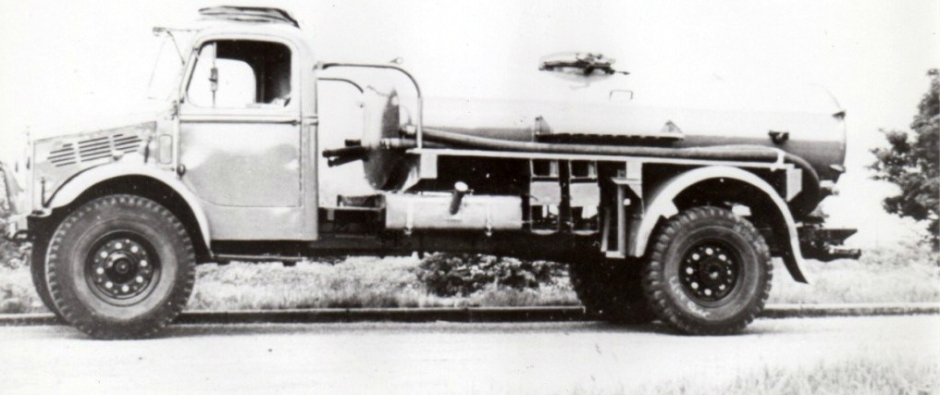
Bedford OY Water Tanker
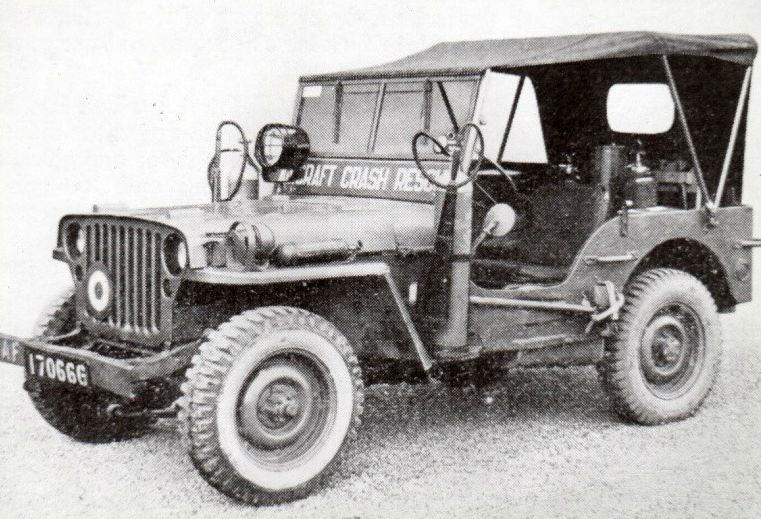
Another development which happened during the War & Post-War years was the introduction of an Aircraft Crash Rescue Truck. This was to be a small Vehicle which would be fast to the scene of a Crash to reduce the time trapped Aircrew would be exposed to Fire. The 1st which was introduced in 1943 was the ‘Willy’s Jeep’ which carried 4 Foam Extinguishers, 2-CO2 Extinguishers and 1-CTC Extinguisher. It also carried 2 Asbestos Blankets, a short Ladder, various Hand Tools, a First Aid Kit & a Searchlight. Other versions over the years were developed most based on a Land-Rover Chassis.
